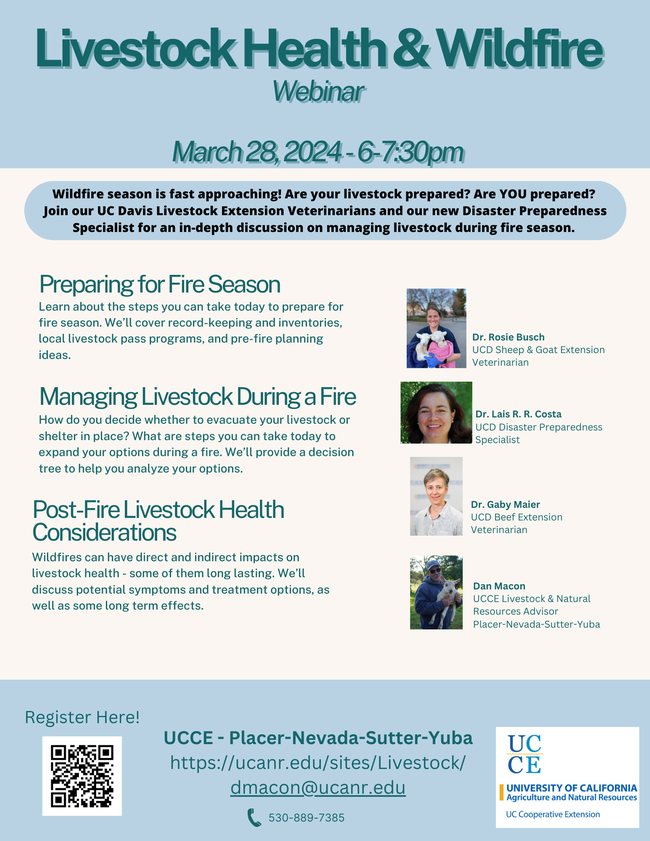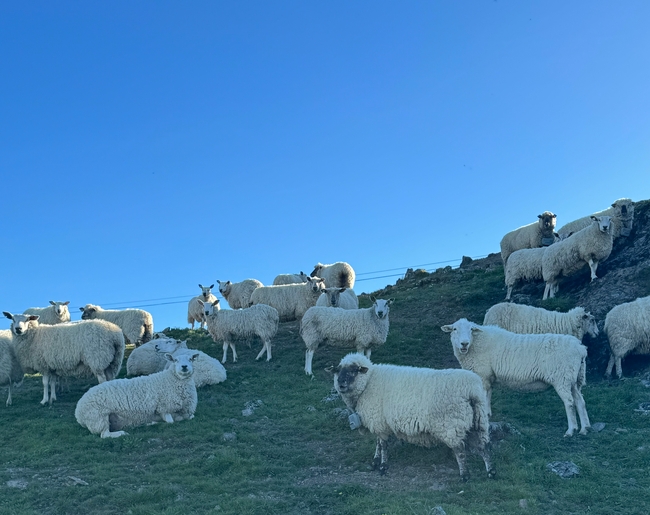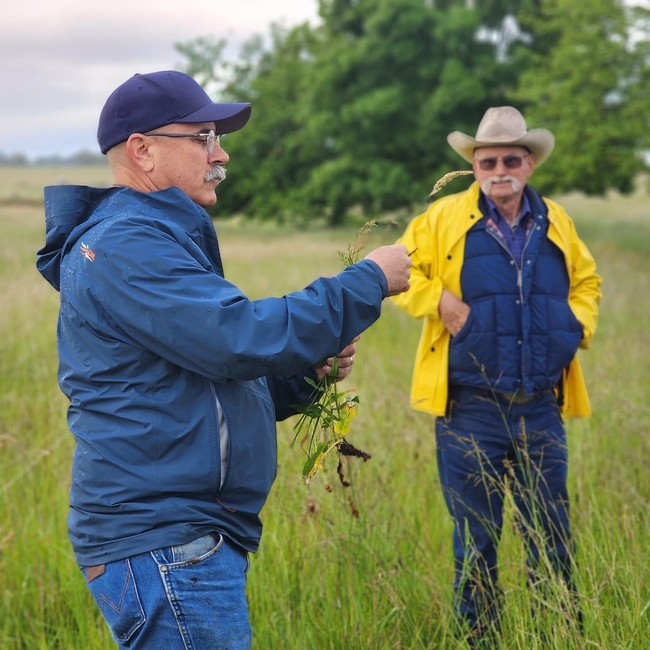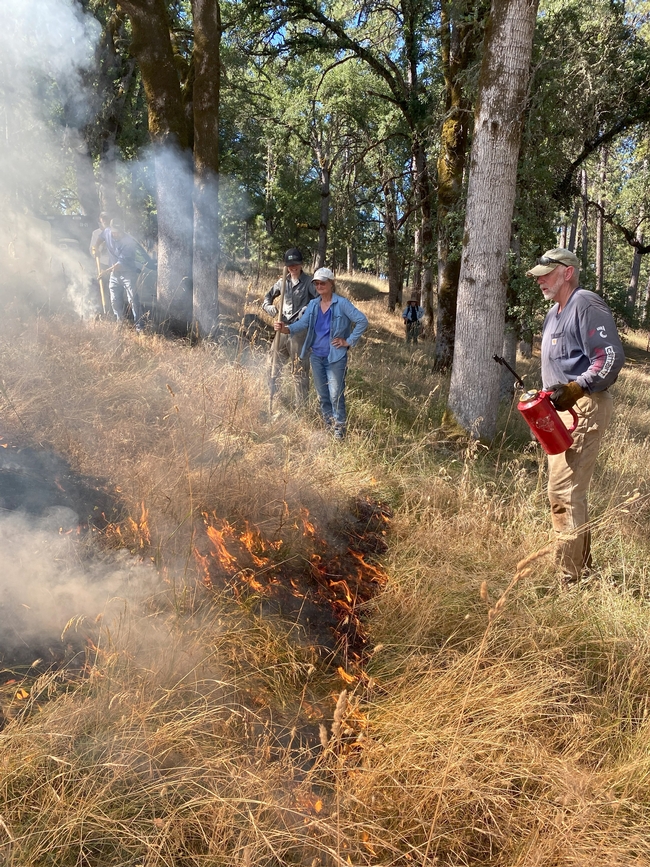- Author: Daniel K Macon
As of this writing, we're on track for a "normal" rainfall year here in Auburn. Even if the rainy season ended with last week's storm, we'll finish the year at 90 percent of our long term annual average. In the high country to our east, the story is even better - the snow-water equivalent is sitting at 110% of the April 1 average. For the Nevada Irrigation District (NID), which serves western Nevada County and northwestern Placer County, low elevation rain and high elevation snowpack are a great combination - their reservoirs are full!
But despite all of this positive weather and water supply news, those of us who rely on NID water to irrigate pasture and other crops are facing the prospect of drought through the late spring and early summer (and possibly beyond). Earlier this year, a massive landslide damaged a portion of PG&E's South Yuba Canal below Spaulding Reservoir. In addition to moving water out of the high country for power generation, the canal allows NID to bring water from its upper watersheds down to Scotts Flat Reservoir east of Nevada City. From Scotts Flat, NID supplies farmers and ranchers throughout western Nevada County.
At the same time, PG&E's Spaulding 1 Power House also suffered significant damage, putting it offline. All of the water that NID moves down to Rollins Reservoir near Colfax comes through Spaulding 1 - and Rollins serves farmers and ranchers in North Auburn, Lincoln, and Sheridan.
At the moment, PG&E hopes to have a partial repair in place by early June, but NID will need to rely on it's low-elevation storage in Scotts Flat and Rollins to serve its irrigation customers. Without the ability to move water below Spaulding, NID projects that both Scotts Flat and Rollins will be significantly drawn down by mid-June. This week, PG&E indicated that some repairs might take much longer (stretching into August or September - more information here). Consequently, they are asking for voluntary conservation measures from both irrigation customers and treated water customers. As more information becomes available, I suspect that mandatory cutbacks may be on the table. The NID Board of Director will meet tomorrow to discuss the situation.
All of this brings ranchers to the unique position of managing for drought during an otherwise "normal" water year. Most of the recent droughts we've experienced in the foothills have been the result of a lack of precipitation and/or warm temperatures during the fall, winter, or spring months (see my post "A Taxonomy of Rangeland Drought" from February 2022). This year's "accidental" summer drought poses a different set of challenges. Many of us want to do our part to help NID conserve water during this emergency, but what are the options that best keep our pastures alive and our our livestock fed?
Traditionally, NID has conserved water during drought by asking customers to reduce the miner's inches they purchase - easy to accomplish simply by changing out the boards in our boxes. In thinking about my own sheep operation, reducing our 8 miner's inches to 6 would mean one of two options: first, I could simply try to put 66 gallons per minute out through a sprinkler system designed to deliver 88 gallons per minute, or second, I could leave one zone of the pasture unirrigated all season. At this point, option 2 makes more sense - I would optimize irrigation on the most productive portions of my pasture and let the least productive section go dry. In the long run, this means replanting that portion of the pasture (or permanently turning it back into less productive dryland forage).
An alternative that NID may not be equipped to accommodate would be to end my irrigation season earlier than normal - that is, to shut off the water to my pasture around September 1. The bulk of my pasture growth comes in the first 8 weeks of the irrigation season. When we hit the high temperatures and long days of July, forage growth goes into a "summer slump" and productivity declines. As the days grow shorter and the temperatures moderate (usually!) in September, our water demand falls and our pasture forages begin preparing for dormancy. With full water deliveries through the end of August, my pastures would likely survive if we didn't irrigate for the last 7 weeks of the season.
In either case, we'll need to think about balancing livestock demand with a diminished supply of summer forage. We can either reduce the number of mouths on the pasture, or purchase more feed (either hay or rented pasture) - or some combination of the two. One of our strategies has always been to match our production cycle with the forage cycle - we typically wean and sell our lambs as the spring flush of forage is ending (in essence, reducing our stocking rate to match a lower carrying capacity in the midst of the summer). Since we also rely on NID for our stock water, I'll need to think about strategies to ensure we're able to get water to the sheep through the summer, as well. NID will credit our accounts for this voluntary reduction in water, which could offset the cost of buying feed. In addition, a voluntary reduction this year will not impact our water deliveries in future years.
We've created a Drought Decision Support Tool to help you consider YOUR options. The first step is to inventory your forage resources for the coming summer and fall. Are you locked in, or do you have some flexibility in accessing additional leased pasture? Alternatively, are there some steps you can take to reduce your stocking rate this summer (like weaning your calves early or keeping fewer replacement heifers)? We've also developed a series of Excel spreadsheets to help you compare the financial impacts of culling females versus weaning early versus buying feed.
During the 2012-2016 drought, my mantra was "hope for the best, but prepare for the worst." While I certainly hope that PG&E is able to complete the repairs at Spaulding more quickly than they are currently projecting, I think it's time to prepare for the worst.
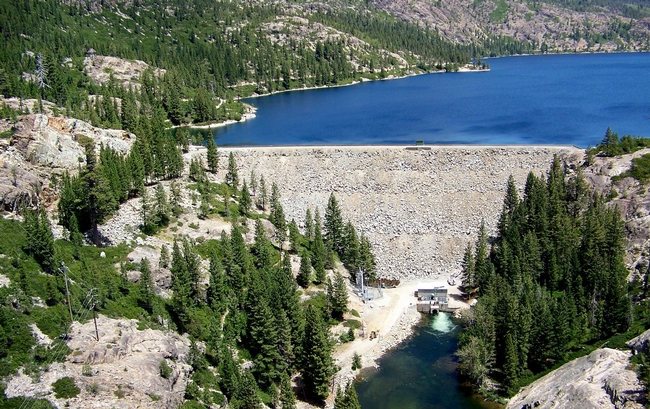
- Author: Daniel K Macon
We have several outstanding workshops coming up in the next three weeks! Contact me at dmacon@ucanr.edu or (530) 889-7385 for more information!
Livestock Health & Wildfire Webinar (Thursday, March 28 - 6:00pm-7:30pm) - Virtual: Join Extension Veterinarians Dr. Gaby Maier, Dr. Rosie Busch, and Dr. Lais Costa, along with UCCE livestock advisor Dan Macon, for a webinar focusing on livestock health and wildfire. We'll discuss preparations for fire season, decision-making during a wildfire, and managing livestock health after exposure to fire and smoke. This webinar is free, but you must register to receive the webinar link. Register at https://ucanr.edu/livestockhealth&wildfire.
Ag Technology Showcase (Thursday, April 11 - 4:00pm-6pm) - Auburn, CA: Join UCCE and other farmers and ranchers to look at new agricultural technology! We'll talk about (and demonstrate) virtual fence technology, electronic identification systems, on-farm weather stations, soil moisture monitors, drones, and other technology designed to improve efficiency and reduce costs. Cost: $10/person. Register at https://surveys.ucanr.edu/survey.cfm?surveynumber=42435.
- Author: Daniel K Macon
A local rancher called this week, and as usual, our conversation turned to grass and moisture conditions (I don't think ranchers and rangeland geeks like me can have a conversation WITHOUT discussing these topics). He said, "Judd and I were trying to remember how long it's been since we've had two "good" rain years in a row - we figured you would know!"
As I've written before, I've kept precipitation records since we moved to Auburn in 2001 - I am now starting my 24th year of recording daily precipitation! I also have monthly forage production data from the Sierra Foothill Research and Extension Center (SFREC) dating back to 1979. When I got back to my office, I checked my records to see if my friends were right. They weren't! Sorry, Bill - we appear to be on track for our third consecutive "good" rain year!
Since October 1, I've measured 25.7 inches of rain in Auburn. As of March 1, we were sitting at 103% of average for that date. Despite what appears to be a "normal" year, however, the March 1 forage data from SFREC indicated they had 639 pounds of forage per acre (about 86% of the long-term average for that date). We weighed a group of 140 steers at SFREC on February 8, and found that they'd just maintained weight - few if any of them had gained any weight since late December. Cattle never lie - there simply wasn't enough grass growth through early February to put weight on the steers!
In terms of precipitation, we were actually at or above our long term average rainfall for the 2021-22 and 2022-23 water years. Total forage production for both of those years was about 20% higher than the long-term average. All of this data confirms that growing grass is much more complicated that simply looking at total rainfall, especially in annual grassland systems like ours - germination date, consistency of fall rain, timing of rainfall throughout the season, and soil/air temperatures all interact to make a good grass year. Or a bad one!
Digging into this data a little further makes the importance of timing even more evident. In 2021, SFREC recorded a germinating rain on October 22. In 2022, the grass germinated on October 5. Last October (2023), SFREC saw a germinating rain on September 30. On January 1, 2022, SFREC had about twice the amount of grass they measured in 2023 or 2024. While germination date is important, the data suggest that the second (and third, fourth, etc.) rainfalls of the growing season are perhaps more important! On January 1, 2022, we'd measured nearly double our "normal" year-to-date precipitation (and a whopping 74% of what we'd normally measure for an entire year). This year, in contrast, we'd received just 57 percent of "normal" rain through January 1 (about 21% of our annual average).
This year, I'm sure our forage growth will catch up with the rainfall. While we're sitting below average for forage for this time of year, the soil moisture we've banked, and the warmer temperatures and longer days ahead of us, mean we're about to start the spring flush - we'll be able to hear the grass growing in the coming weeks! Several well-timed storms in the second half of March and into April will help extend the growing season, but even if we turn dry from here on out, I expect we'll still have a decent grass year.
Bill and Judd - I hope this answers your question! Probably more than you wanted to know!
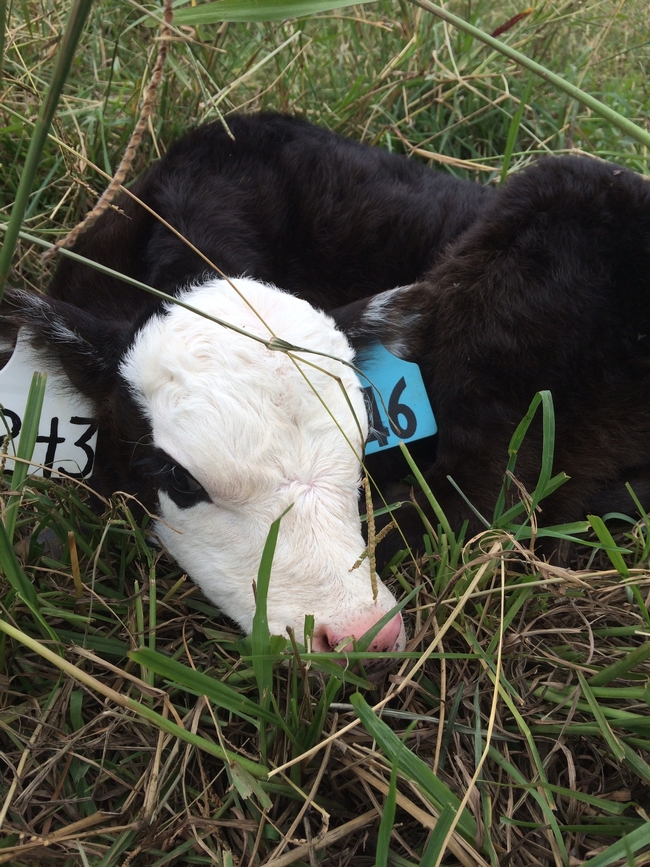
- Author: Daniel K Macon
As some of you know, 2023 was an incredibly difficult year for my family and me. My wife of 33 years, Samia, was diagnosed with an aggressive form of brain cancer last February. After two surgeries, chemo- and radiation-therapy, and an extended stay in the hospital at UCSF, she passed away at home in mid-August. As usual, I've been writing about the entire experience – my personal Foothill Agrarian blog has not had much to do with foothill agriculture for the last 12 months, but it has helped me process the experience.
Despite the enormity of my family's loss, we have been so fortunate to be part of the foothill agricultural community. Family, friends, colleagues, and even folks we barely knew, offered support throughout last year – my freezers were full of food, my woodshed was full of firewood, and my barn was full of hay. I am humbled. Thank you.
All of which makes the decision I recently made even more difficult. One of the things I realized during Sami's illness was how important it was to do everything I could to allow her to be home as long as possible (in her case, ultimately until the very end). While I'm fortunate that my own parents are still living in the house in which I grew up (in Sonora, California), I have realized that being even just three hours away presented a challenge with respect to helping them – and I expect that they will need more help.
In January, my livestock and natural resources colleague in the Central Sierra UCCE office (covering El Dorado County south to Tuolumne County), Dr. Flavie Audoin, left to become the Assistant Specialist in Plant-Herbivore Interactions and Targeted Grazing at the University of Arizona – her dream job! At my request, UCCE is facilitating my transfer to the Central Sierra region effective October 1, 2024. UCCE will also refill my position here (covering Placer, Nevada, Sutter, and Yuba Counties) – hopefully before I leave.
As you might imagine, this has not been an easy decision. I've lived in Placer County for 30 years; Samia and I raised our children in Auburn, and I've had the good fortune to work with and become part of an incredible farming and ranching community here. But I'm also grateful that UCCE is providing me with the opportunity to come back to the part of the foothills where I grew up – to continue doing work that I love while being closer to my family.
In my seven years as a livestock and natural resources advisor here in Placer-Nevada-Sutter-Yuba, I have focused my research and extension programs on livestock-predator interactions, drought management and disaster resilience, targeted grazing systems, rangeland prescribed fire, and economic sustainability. While many of these issues are relevant to ranchers and land managers throughout the Sierra region, I look forward to working with the ranching community in Central Sierra to better understand their specific priorities and needs. And I will continue to share information on ranching topics through my Ranching in the Sierra Foothills blog and our Sheep Stuff Ewe Should Know podcast. So, while my home office (and my home base) will change, I look forward to remaining a part of the larger Sierra Nevada ranching and rangeland communities.
In the meantime, my extension and research work will go on – we have workshops on fire, agricultural technology, and sheep health management planned through the spring and early summer. Our Tahoe Cattlemen's Association Spring Ranch Tour is set for May 4 (stay tuned for details!). We have targeted grazing workshops and research projects on tap. If you'd like more information about any of this, please contact me at dmacon@ucanr.edu!
- Author: Daniel K Macon
There's still time to register for our first-ever Sierra Foothills Rancher's Fire Academy! We'll be covering topics like using prescribed fire to control rangeland weeds, planning your own prescribed fire, fire tool basics, ranching hardening, and managing livestock during wildfire. You'll learn from local and regional fire experts, UC researchers, and from your fellow ranchers! Each session is just $10 per ranch (with up to four people from each ranch eligible to participate)!


